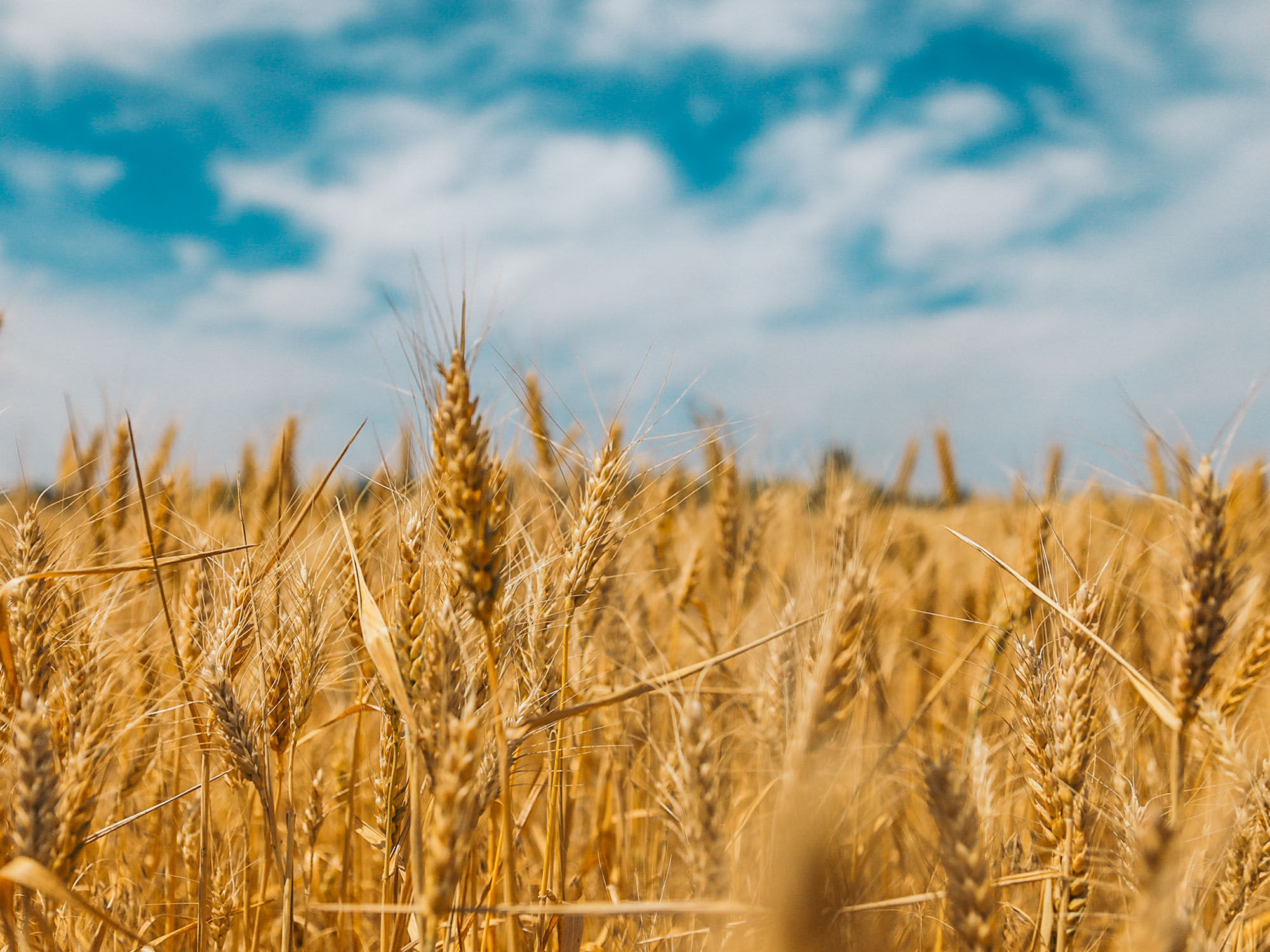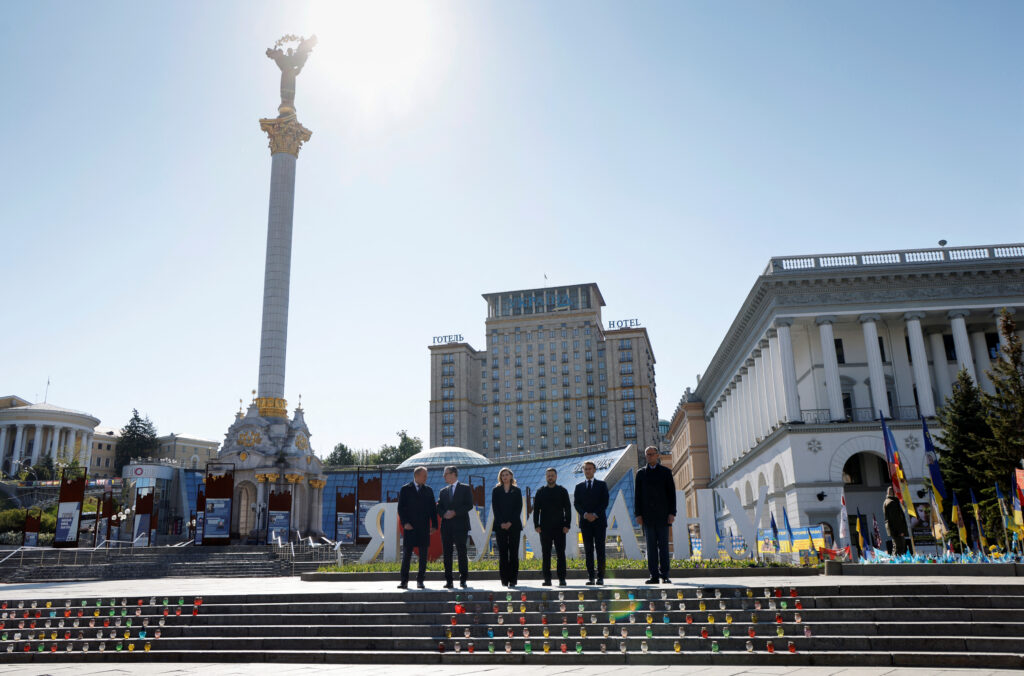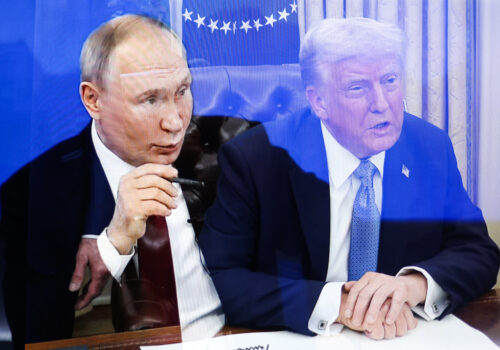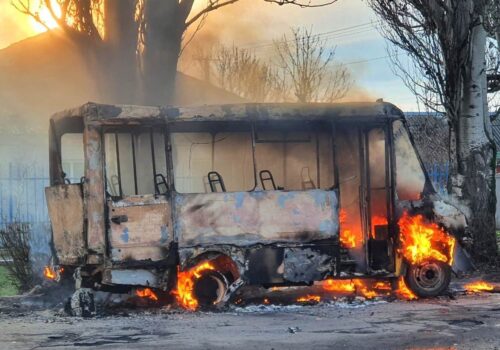Ancient Kyiv is drenched in more than a millennium of history and boasts a dizzying array of cathedrals, monasteries, and palaces dating back hundreds of years. However, the location most intricately associated with modern Ukraine’s national journey is far younger than any of these venerable landmarks and carried no particular spiritual significance until the very recent past.
Located in the geographical center of Kyiv, Independence Square is known to locals and foreign guests alike by its Ukrainian-language name, Maidan Nezalezhnosti, or simply Maidan. Over the past three decades, Maidan has undergone a dramatic transformation that has seen it emerge from Ukraine’s post-Soviet identity crisis via two popular uprisings to become the sacred ground zero of a nation forged in the crucible of revolution and war.
Today, Maidan is an obligatory point of pilgrimage on the itinerary of all visitors to the Ukrainian capital. People come to Maidan in order to honor those who have died in the fight against Russia’s invasion, or just to soak up the atmosphere of an iconic location that has witnessed some of the most consequential political events of the twenty-first century.
It was not always this way. When the modern square first began to take shape in the nineteenth century, it was a relative backwater in an elegant and aged city where the center of gravity remained firmly fixed elsewhere. Tellingly, when Ukrainian officials gathered in Kyiv on January 22, 1919, to publicly sign the unification act between the Ukrainian People’s Republic and the West Ukrainian People’s Republic, they chose to stage this historic event on Sophia Square rather than Maidan.
As Kyiv rose from the ashes following World War II, the square became more architecturally impressive and gained in logistical importance, but it continued to lack the aura attached to the city’s true heirlooms. Instead, Maidan remained a fairly identikit Soviet public space noted for its large fountains and even larger Lenin monument.
Maidan first became associated with political activism during the dying days of the Soviet Empire in 1990 when it hosted a two-week student protest dubbed the Revolution on Granite that played a significant part in Ukraine’s independence struggle. At the time, it was known as October Revolution Square. Maidan would receive its current name on August 26, 1991, two days after the Ukrainian declaration of independence, but it would be many years before the square began to earn its current reputation as a genuine symbol of Ukrainian statehood.
Stay updated
As the world watches the Russian invasion of Ukraine unfold, UkraineAlert delivers the best Atlantic Council expert insight and analysis on Ukraine twice a week directly to your inbox.
During the first decade or so of Ukrainian independence, Maidan was anything but inspiring. The square remained largely empty, with no monuments or memorials to celebrate the newly independent state. Instead, the cult of communism was replaced by crass commercialism. On the spot once occupied by Lenin, a giant TV screen was installed broadcasting an eclectic mix of adverts, pop videos, cage fights, and catwalk shows. Taxi drivers would line up nearby and watch absentmindedly while waiting for new fares.
High above Maidan, the skyline was dominated by the Hotel Moscow. In 2001, the Ukrainian authorities finally decided that this branding was probably inappropriate for a country looking to shake off the shackles of empire, and the hotel name was duly changed from Moscow to Ukraine. Likewise, a colossal Soviet hammer and sickle was allowed to loom large over Maidan until 2003, when it was belatedly removed from the facade of the Trade Union building. The continued prominence of the Soviet crest made a mockery of Independence Square and spoke volumes about the often ambiguous attitudes toward Ukrainian statehood that characterized the early post-Soviet period.
The first big turning point in Maidan’s transformation came following Ukraine’s November 2004 presidential election. Amid massive public anger over a crude Kremlin-backed bid to steal the vote, huge crowds flooded into Kyiv from across the country and congregated on Maidan, establishing a tent city and a round-the-clock presence. This protest movement lasted for over two months and came to be known as the Orange Revolution. Millions of Ukrainians participated. They eventually succeeded in overturning the rigged election and forcing a rerun which was won by the opposition candidate, representing a watershed moment in modern Ukrainian history.
Maidan itself was synonymous with the Orange Revolution and occupied a central position in the mythology that grew up around it. From that moment on, Maidan became not just a place but also an event. To stage a Maidan meant to organize a grassroots protest and hold power to account. This was a particularly terrifying concept for the neighboring Russian authorities. Dread of a Moscow Maidan soon began to haunt the Kremlin, feeding Putin’s obsession with Ukraine and laying the foundations for the horrors that were to follow. The Russian propaganda machine promptly adopted Maidan as a buzzword signifying wicked foreign plots, and continues to use it two decades later without any need for further explanation.
Eurasia Center events

Nine years after the Orange Revolution, Maidan would be the scene of a second Ukrainian revolution. This time, the spark came when Ukraine’s pro-Kremlin president, Viktor Yanukovych, pulled out of a long anticipated EU association agreement and unleashed the riot police against students who objected to this drastic geopolitical U-turn. Once again, millions of Ukrainians flocked to the capital and gathered on Maidan. This time, though, it would not be bloodless.
With strong backing from Russia, the Ukrainian authorities took a hard line approach to the protests, leading to weeks of running battles on Maidan and in the surrounding streets. The nadir came in late February 2014, when dozens of protesters were shot and killed in the city center. This Maidan massacre brought down the Yanukovych regime. With his support base evaporating, the disgraced Ukrainian president fled to Russia. Days later, Putin responded by invading Crimea. Russia’s war to extinguish Ukrainian statehood had begun.
The tragic events of February 2014 had a profound impact on Ukraine’s collective psyche and served to consecrate Maidan in the national imagination. Up until that point, the square had regularly hosted public holidays, pop concerts, and Christmas fairs. In the aftermath of the killings, such events were moved to other locations in the Ukrainian capital. Maidan itself would now be reserved for the most somber and significant occasions in the life of the nation, such as the funerals of soldiers, vigils for Ukrainians held captive in Russia, and memorials marking important Ukrainian anniversaries.
Since 2022, Maidan’s transformation has gained further momentum amid the shock and trauma of Russia’s full-scale invasion. During the initial stages of the war, people began planting flags on the square in memory of fallen soldiers. This impromptu memorial has since expanded organically to become a sea of flags and portraits commemorating those who have lost their lives in the defense of Ukraine. It is an authentic grassroots tribute that is entirely in keeping with the spirit of Maidan.
As Russia’s invasion has unfolded, Maidan’s role as the principal site for wartime mourning and reverence has served to confirm the square’s position at the heart of modern Ukraine’s national story. There could hardly be a more fitting location. After all, Vladimir Putin launched the current war because he viewed the emergence of an independent Ukraine as an intolerable threat to his own authoritarian regime and a potential catalyst for the next stage in Russia’s long retreat from empire.
Maidan embodies Putin’s darkest fears. The Russian dictator’s goal remains the destruction of Ukraine as a state and as a nation, but he is acutely aware that the country is slipping inexorably out of the Kremlin orbit. This is nowhere more evident than on Kyiv’s central square, which has become the ultimate symbol of Ukraine’s escape from empire and embrace of an independent identity.
Peter Dickinson is editor of the Atlantic Council’s UkraineAlert service.
Further reading
The views expressed in UkraineAlert are solely those of the authors and do not necessarily reflect the views of the Atlantic Council, its staff, or its supporters.

The Eurasia Center’s mission is to enhance transatlantic cooperation in promoting stability, democratic values, and prosperity in Eurasia, from Eastern Europe and Turkey in the West to the Caucasus, Russia, and Central Asia in the East.
Follow us on social media
and support our work
Image: Poland's Prime Minister Donald Tusk, Britain's Prime Minister Keir Starmer, Ukraine's President Volodymyr Zelenskiy and First Lady Olena Zelenska, France's President Emmanuel Macron, and Germany's Chancellor Friedrich Merz pose for a picture at the Independence Square (Maidan), ahead of a gathering of European leaders in the Ukrainian capital, in Kyiv, Ukraine May 10, 2025. (LUDOVIC MARIN/Pool via REUTERS)





